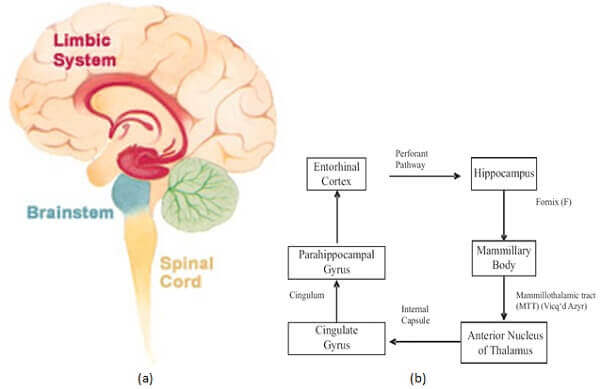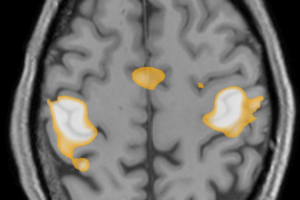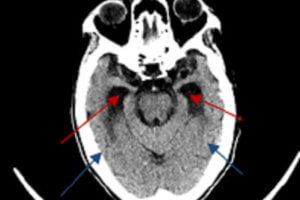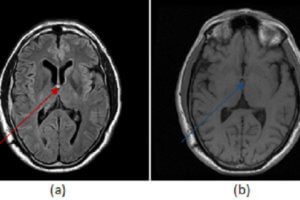
The limbic (derived from the latin limbus, to border or edge) system is a network of structures centered in the medial temporal lobe. These structures or their analogs are found in the brains of even simple organisms making them a part of a phylogeneticaly “old” brain. It is not surprising then that the limbic system has been implicated in functions important for the organisms survival including emotion, memory, learning and reward.

Figure 1: Source (a) Brainlimbic system.jpg from Wikipedia commons; (b) Rajmohan et al Indian J Psychiatry 2007 Apr-Jun; 49(2): 132-139.
The limbic system contains a variety of structures. Some important ones include:
| Structure | Function | |
|
|
|
|
|
|
|
|
|
|
|
|
|
|
|
|
|
Structures in the limbic system are connected through Papez’s circuit – information flows from the hippocampal formation through the fornix which runs superior and then anterior to the thalamus, terminating in the mammillary bodies. Information received by the mammillary bodies is passed through the mammillothalamic tracts to the medial, dorsal and subsequently anterior thalamic nuclei then to the cingulate gyrus through the thalamocingulate radiations. Finally, from the cingulate, information is sent to temporal, posterior parietal and other association areas within the cortex and connected back to the parahippocampus gryus. Hence Papez’s circuit integrates cortical and subcortical areas, allowing a coordinated response to events, especially emotional ones, achieved by influencing such structures as the nucleus accumbens (the brain’s “reward” center, which responds to the difference between expectation and outcome by modulating dopamine), and the hypothalamus (which modulates the endocrine system and the autonomic – flight or flight- nervous system).




